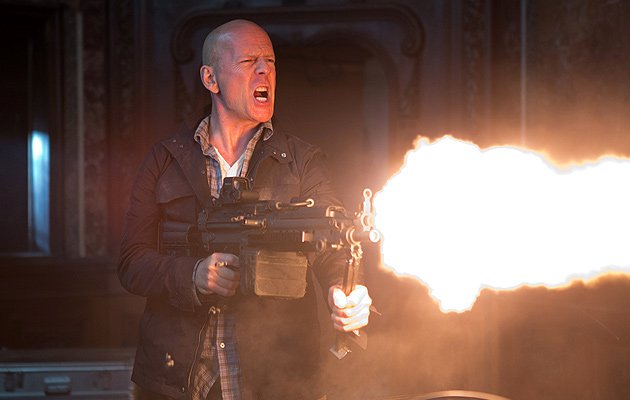
Though we’re no longer building Colosseums to watch people die gruesomely, violence is still a fan favourite on the big screen. But just because the fights aren’t real doesn’t mean filming them isn’t dangerous. Having violence and weapons on set means you must follow strict rules and guidelines to ensure everyone walks away intact.
Note: Much of this advice is from a Vancouver perspective. However, these are still solid guidelines for anywhere.
- Blanks Can Kill
In 1984, Jon-Erik Hexum fired a blank-loaded pistol against his head as a joke and sent pieces of his skull into his brain. He died days later.
Unfortunately, this is not an isolated case. Blanks might sound harmless, and they’re definitely safer than real bullets, but an explosion is driving air out of the narrow barrel of the gun at an extremely high velocity. This means they can still easily rip bone and metal apart at short range.
Safe distances can vary depending on the load and the width of the barrel. Always heed the safety precautions set by your expert.
- Have a Police Officer On Set
Big or small, any scene of violence (not just those involving weapons) that can be seen or heard by the public must have a police present on set. No matter how obvious your film set seems to you, the public may misinterpret a glimpse of violence (including screams or gunfire) and call the police–potentially culminating in a SWAT team descending on your set. The situation could dangerously escalate.
Misunderstandings with the police can be intense, like in this incident, so do your utmost to keep authorities in the loop. If in doubt, consult your police department.
- Only Hire Qualified Weapons Handlers
Don’t try and save money in this area–pay for the trained expert.
Inexperience killed Brandon Lee. The inexperienced prop master on set of The Crow modified live bullets into blanks and dummy rounds (these don’t have gunpowder but keep the lead tip). Unbeknownst to anyone, during a scene where an actor was loading the dummy rounds into a gun, the lead tip became lodged in the barrel. The next scene the same gun was used was where Lee was to be shot at with a blank. The explosion of the blank projected the lead tip into Lee’s abdomen, killing him.
Saving a few dollars cost the lead actor’s life.
- Never Lose a Weapon
If a weapon, fake or real, goes missing from a film set and is used to commit a crime, the production can become liable.
Ensure all actors return weapons promptly after their scenes. If you have lots of armed background actors, establish a perimeter they can’t take weapons beyond. For example, they must surrender their weapons before leaving the direct area of the set to go to the bathroom, catering, dressing rooms, etc.
PAs and ADs should assist in keeping an eye on weaponry, especially since a misunderstanding can arise if the public sees armed people wandering around.
- Hold Safety Meetings
In pre-production, you must discuss with your experts (a qualified weapons handler/armourer, stunt coordinator, and effects coordinator) the use of weapons, protective equipment, precautions, and how a scene is to be conducted and draw up protocols.
Go through these protocols in your Production Meeting for the heads of departments. Attach the relevant safety bulletins, guidelines, and directions to the call sheet the day before the scene.
Before shooting the scene, conduct a scene specific safety meeting with the entire crew, relevant cast, and armourer/weapons handler present. Make sure your location is also notified ahead of time of such scenes.
- Give Actors Ample Time to Train
Allow enough time for actors to learn how to use the weapons without feeling pressured. Send them to the range with the armourer/weapons handler so they can be properly trained. The actors must remain under the armourer/weapons handler’s supervision at all times.
- Consider Using “Non-guns”
Because they only have a small, electronically triggered squib in the barrel and don’t require blanks, non-guns are significantly safer and quieter than guns.
The fact that they don’t eject shell casings or have moving parts means they can’t be used in a scene where the gun is being loaded, the hammer is being cocked, or a casing is ejected. However, for simple firing, these are a much safer option.
- Nobody But The Armourer or Trained Actors Handles Weapons
This should be straightforward but bears repeating–loudly: NOBODY but the armourer/weapons handler or trained actors handles the weapons. NO EXCEPTIONS.
People are killed on set too often due to mishandling of weaponry, but injury and loss of life can be prevented. Safety should always be the top priority. Your creative vision is not worth dying for–no matter how you might feel.